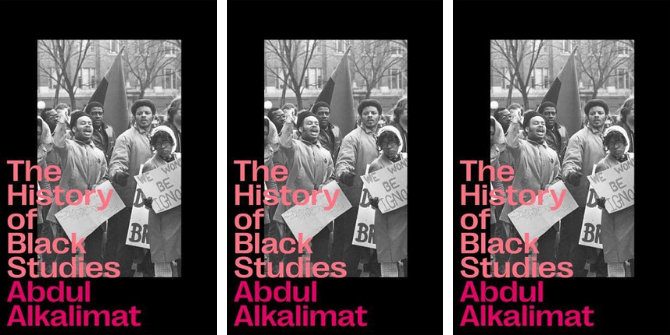 Jennifer Brown reviews some of the psychological evidence challenging the assumption that torture works as an interrogation technique. In light of Donald Trump’s recent comments on the use of torture, she suggests that the moral case is more effective in persuading people to oppose torture than pragmatic arguments.
Jennifer Brown reviews some of the psychological evidence challenging the assumption that torture works as an interrogation technique. In light of Donald Trump’s recent comments on the use of torture, she suggests that the moral case is more effective in persuading people to oppose torture than pragmatic arguments.
‘Does it work? Does torture work?’ and the answer was ‘Yes, absolutely’. Initial reactions to Donald Trump’s callous comments about legitimating the use of torture are moral outrage, anger, despondency and heartache. This appears to be the latest in Trumpisms: that if you say something loud enough and many times, it must be true. Yet as a popularist sentiment, 46 per cent of Americans apparently share Trump’s view that captured enemy combatants can be tortured to obtain important military information, according to a recent International Red Cross survey. This compares with 26 per cent of people in the UK.
There are two basic lines of argument against the use of torture: human rights and ethical objections, and pragmatic reasons. The Human Rights arguments are well made by Edward Keegan who forensically demolishes apologists’ case for justifying torture. His commentary discusses the violation of the rule of law, ethical values, and the dehumanising of both victim and torturer. Here I want to lay out the psychological evidence about the supposed efficacy of torture as a means of obtaining information.
There is an implicit assumption made about coercion – whether by the bully, the wife batter, or the torturer – that it produces the effects desired by the abuser. In the case of interrogations by the intelligence community, presumably the idea is to obtain useful and accurate information previously unknown to the interrogator. However, people under duress and in the face of coercion may comply only in order to stop the pain – but they are not telling the truth. My colleague Gisli Gudjonsson has investigated this tendency in the making of false confessions to the police by susceptible people and which have led to miscarriages of justice because under threat, people admitted to offences they had not committed.
Apologists for torture also underestimate the resistance of those being tortured. We laud the heroism of French resistance fighters who went to their deaths rather than betray their comrades. During torture, people can become dissociated, constricting their consciousness and focusing on minimising pain – especially if they seek to protect their loved ones or support a way of life. Thus, Peter Hoffman explains the bravery of Second World War resistance fighters in the face of Gestapo torture was because those detainees who held the most potentially valuable information were also the most likely to be committed to their cause, giving them a psychological strength.
Keegan notes that a well-recognised impact of torture is its radicalising effect. He describes this in relation to the French’s occupation of Algeria and its war against the Front de Liberation Nationale. Torture of Algerian Muslims added to the grievances felt towards the occupying French and encouraged further retaliation. Ronnie Janoff-Bulman also talks about revenge for past misdeeds and retributive justice whereby those harmed and humiliated meted out punishment to their torturers.
There is now a huge amount of psychological evidence on successful interviewing techniques which require the development of a relationship and rapport between interrogator and interrogatee. Effective strategies for eliciting information require persuasion and an appreciation of the motives, needs, and self-perception of the latter; they also require time.
So why might these techniques not be appropriate for those labelled as terrorists? One reason can be found in the so-called “ticking time bomb” scenario whereby there may literally be a bomb about to go off so that under these pressures, the use of torture to reveal the location or defuse the bomb is justified because it will save lives. This dilemma was explained by philosopher Philippa Foot as the doctrine of double effect. Through a series of thought experiments, she demonstrated a distinction between what someone may foresee as a consequence of an action, and what is intended – even if this means achieving a good end by regrettable means. The double effect is where an action may produce the potential good i.e. the defusing of the bomb, but also the other foreseen but undesirable outcome e.g. the retributive effects. By and large intelligence gathering is not actually so time-critical – certainly not as portrayed in films – so the imperative to torture to reveal life-saving information is undermined.
The other explanation proffered by Ronnie Janoff-Bulman justifying use of torture is that relationship based interrogation tactics are just too soft to be employed on proponents of “the axes of evil,” because hardened enemies lack our motives and values. Donald Trump demonizes Muslims by differentiating between American and Islamic values. This takes us into the territory of heuristic bias. People may assume that cruel and unusual torture is the only way information can be obtained from people they believe to be cruel and different to themselves. As Jannoff-Bulman says in denigrating our enemies we deny them their humanity and in doing so maintain they would be most responsive to inhuman treatment.

Two perhaps infamous psychological experiments show how relatively easily ordinary people can engage in cruelty. The Stanford Prison Experiment was a role play in which students were assigned to play the part of prisoner or guard. The experiment was scheduled to last two weeks but had to be stopped after 6 days because the role-playing guards dropped into a pattern of abusive behaviours towards their fellow ‘prisoner’ student who were acting as prisoners.
The Milgram experiment was where again college students apparently complied when required to administer what they thought were lethal electric shocks to unseen participants as instructed by their teacher/experimenter. Susan Fiske illustrates how these social conformity pressures were played out for real at Abu Ghraib where US military guards abused their Muslim detainees. The American soldiers were operating under conditions that were stressful, their morale was low, they were untrained for the job and their command climate was lax. The prisoners were their enemies. Under these circumstances, their solidarity to their colleagues was exaggerated as were their prejudices and discrimination towards their prisoners towards whom they felt disgust and contempt.
It is then a short step to enhance the value of your own kind and dehumanise those you see as different. Philip Zimbardo, architect of the Stanford Prison Experiment, applied his observations about his participating students to Abu Ghraib soldiers, calling the processes that turned ordinary people into torturers the “Lucifer effect“. The combination of stressful environment, identification of “us and them” groupings, power differentials, and authoritative instructions provided a toxic mix. If we add to that sanction by your country’s leader, then we have a chilling and volatile cocktail. Lessons from the Lucifer effect show the importance of leadership (the fish stinks from the head down) and a social climate that can normalise cruel behaviours.
Studies by US psychologists showed that of the two lines of argument – moral or pragmatic – it is appeal to the former that is more likely to persuade people to oppose torture. Moral outrage is a strong motivator to stand up for justice. Where people glorify their own in-group (America first) and members of that in-group inflict cruelty, not only is the moral outrage missing, but people actually increase their belief that torture committed by their own side is beneficial. Presenting a moral critique is more powerful than trying to demonstrated pragmatic ineffectiveness of torture. Appealing to moral argument enhances feelings of empathy towards the victim serving to remind the in-group of the humanity of the out-group and their connectiveness as human beings.
It is to be hoped that Theresa May will be clear in her moral stance disavowing the sharing of intelligence gathered by means of torture and repudiates extraordinary rendition and black sites of secret imprisonment.
This article first appeared at the LSE’s British Politics and Policy blog.
Featured image credit: Pixabay, CC0 Public Domain
Please read our comments policy before commenting.
Note: This article gives the views of the author, and not the position of USApp– American Politics and Policy, nor of the London School of Economics.
Shortened URL for this post: http://bit.ly/2jKaGUw
______________________
 Jennifer Brown – LSE Social Policy
Jennifer Brown – LSE Social Policy
Professor Jennifer Brown is Co-Director of the Mannheim Centre for Criminology, Department of Social Policy at the London School of Economics. She has recently edited the books Forensic Psychology (2014) and The Future of Policing (2014) and with colleagues she published Forensic psychology: theory, research, policy and practice.






